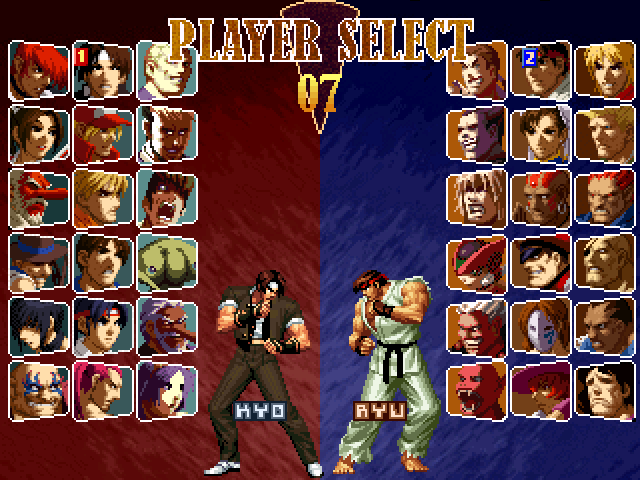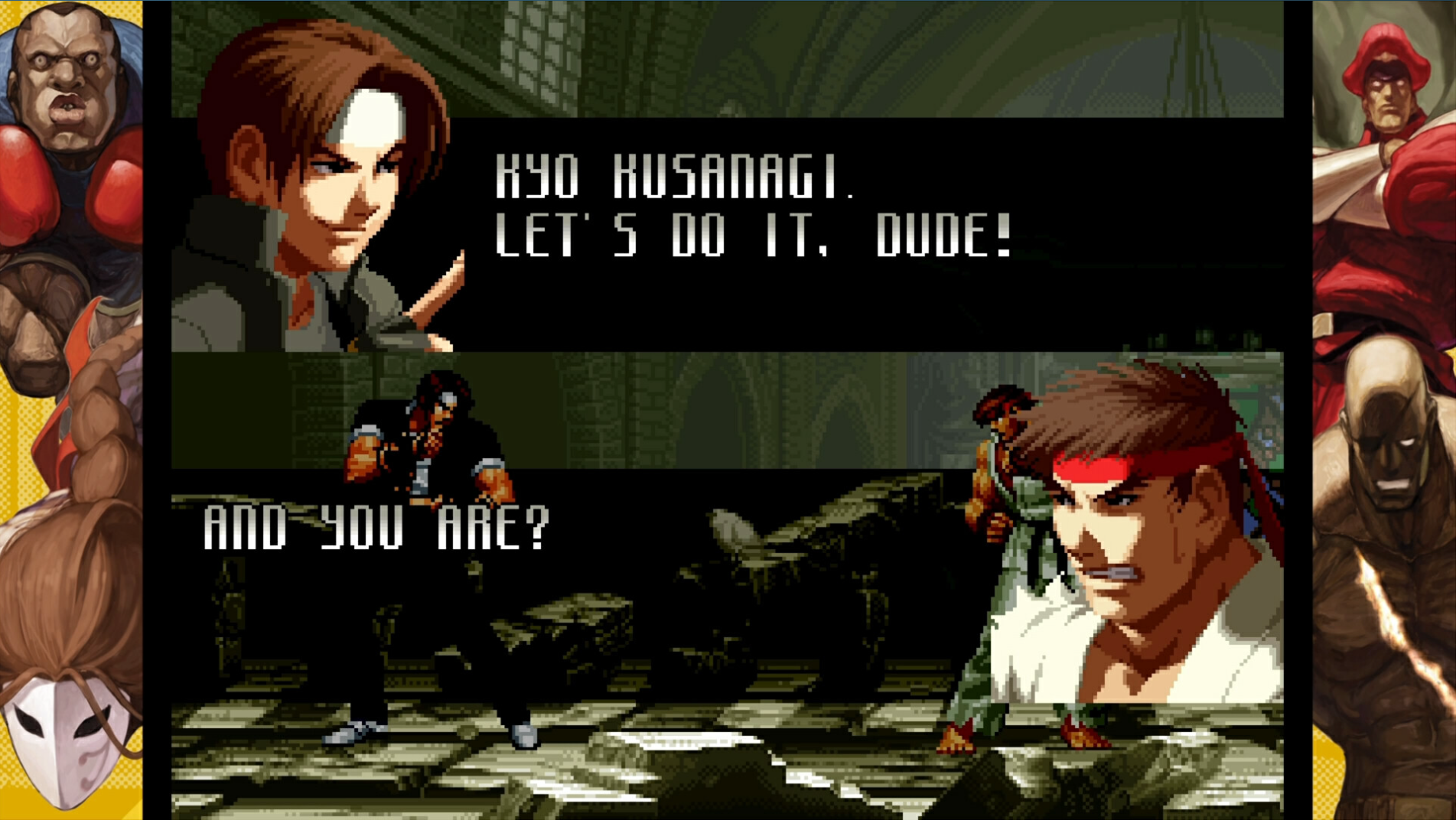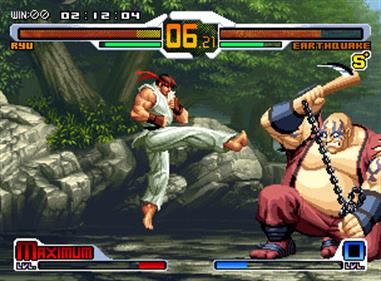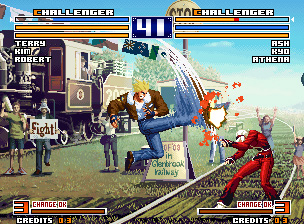I’ve reached the inevitable problem I expected to run into
when I started this series. During the 7th console generation,
SNK was able to recover from their bankruptcy and continue making arcade games
for a while longer in addition to some home console-original games and home
ports of their older games. Capcom went
even further ham on the console games and set themselves up as quite possibly
the best game company there was until they took to meth and thought making
Devil Kings was a good idea.
 |
| "Y'know that cool Japanese game about Japanese figures in Japan? What if they WEREN'T?" |
Therefore, for the rest of this series, I’ll be judging each
company by a stretch of time between Capcom’s years of arcade game
releases. That means 2002-2004, 2005-2008,
2009 & 2010, 2012-2014 and then it will finish off with 2016 all the way to 2019 with
the release of the arcade version of Samurai Shodown 2019. Though they’ll have far fewer games, if
Capcom’s games manage to be amazing enough to blow everything from SNK out of
the water, they can get the points. By
the end of this, only one company will be declared the King of Arcades! Now we’ll get started with SNK’s games of
2002, where they were still getting help from Eolith and recovering from bankruptcy.
Metal Slug 4(SNK): As I stated before, Metal Slug X and 3
are the pinnacles of arcade shoot-em-ups and making another Metal Slug game to
match them is an insurmountable task.
SNK (or rather, Playmore) wisely decided to go in a different direction
and deliver a different Metal Slug experience.
Rather than taking inspiration from movies like Aliens and
Independence Day, Metal Slug 4 goes back to the slightly more grounded setting
of the first game, but still with some sci-fi elements, particularly in the
final level. It’s a more modernized plot
against advancing technology, where the main conflict is a dangerous computer virus made by a high-tech
evil organization and some of the bosses are man-made robots.
The less wacky feel also means the rideable animal
companions are out and in their place are some repurposed enemy vehicles you
get to ride, but apart from that and a few new enemies, Metal Slug 4 is more of
the same and checks all the boxes for a Metal Slug game: fun chase sequences,
varied enemy types (mostly re-used), pretty visuals, good music, tight controls,
big bosses and lots of gratifying explosions.
It’s a solid game.
The King of Fighters 2002(SNK): It’s wild how much can be
improved in just one year. What KOF 2001
did wrong KOF 2002 does right. KOF 2002
is one of the most polished KOF games yet.
The gameplay goes back to before strikers were introduced and has a much
better sense of weight and tightness closer to KOF 99 and 2000. The presentation is on par with the best in
the series, with some great character artwork, changing backgrounds filled with
cameos from other SNK characters and a great soundtrack that still has some of
that synthesized techno feel 2001 had, but with catchy and mood-setting medleys
that work very nicely.
Being a dream match game, KOF 2002 has a unique character
roster with some old favorites (with the curious exception of King) alongside a handful
of characters introduced in the NESTS saga and once again there’s a very
difficult final boss with a couple excellently animated cutscenes. There’s no ending artwork like the previous
dream match game, but it does have funny little skits over the credits.
The King of Fighters 2002 has the quality expected from a
KOF game and any fan will tell you it’s worth playing. I think 98 is the better game and since
there’s no plot to this one I wouldn’t lose any sleep skipping on it, but it’s
a worthy entry to the franchise.
Moving on to 2003, SNK officially were back in business as they merged the former SNK staffers with the company playmore to form SNK Playmore and yet with how consistently SNK has been putting out arcade games up to this point, you might not have ever noticed.
SNK vs. Capcom: SVC Chaos(SNK)
The first thing SNK Playmore did was come right
out the gate swinging at their sworn enemy with their own arcade crossover
game! Whether theirs outshines Capcom’s
is another story.
I love how the game looks.
Capcom characters look consistent with their original designs, but
adjusted to work in the new SNK/KOF style and some, like the Mars Person from
Metal Slug, have impressive animation and shading. The artwork for characters and cutscenes are
also the sharpest and most expressive I’ve seen from SNK yet, further raising
the bar in the quality of their pixel art.
I also love the story, or at least the dialogue. The actual plot is not conveyed and the comic
adaptation is so stupid that I don’t think it’s an adequate explanation. The best you can gleam is that the fighters
are in some kind of parallel world, or maybe timeline, where the world is
destroyed and they need to fight each other to earn the favor of either
Astaroth from Ghosts N’ Goblins down in the demon world or one of the gods from
Puzzled up in heaven in order to go back to their world.
It takes some time getting used to SVC Chaos because it
doesn’t play like Street Fighter or KOF.
It plays like SVC Chaos. It’s not
too hard to get a hold of how Street Fighter characters play with 4 buttons
because it does a good job of assigning medium attacks as command normals. It’s the framework of the game overall that’s
the sticking point. It’s very
simplified, with only 2 different kinds of jumps, no rolling and no
countering. The biggest mobility tool
given is a short dash forward, which you can do right after you block an attack
to make a defensive advance on the opponent.
The lack of mobility tools and slower pace makes SVC Chaos feel more sluggish and less snappy and it doesn’t help that a lot of the super moves just don’t have the same kind of visual flair and impact as they do in their home series, almost as if the game is holding them back.
I don’t like how the single player mode does things either,
even though the aforementioned dialogue makes up for it. SVC Chaos has the same problem as Mark of the
Wolves with how nearly impossible it is to get its endings. Like Mark of the Wolves, SVC Chaos slaps you
with an abrupt ending after a penultimate boss if you don’t meet a
prerequisite, in this case being to win without losing a round before reaching
said penultimate boss. Not only do you
need to fight another powerful opponent before that one, but the game as a
whole is pretty difficult. I swear the
computer opponents sometimes cheat in a way I thought we abandoned with KOF 95
and losing a round is practically an inevitability. This can be circumvented if you lose and
continue, because continuing effectively strikes the previous result of that
match, but I shouldn’t have to exploit the game just to get a proper ending! Then, when you do reach one of the true final
bosses, you only get one shot at them and can’t continue if you lose, though
thankfully they aren’t nearly as hard as the bosses before them. It’s frustrating and there is no shame on
playing this one at the lowest difficulty.
 |
| I like both companies using pre-established characters tapping into their true power as bosses. |
SNK vs. Capcom: SVC Chaos is a mixed bag. There’s a lot to love, but also a lot that
puts a damper on its stronger points.
It’s less a serious game you’ll keep coming back to as a refined
competitive experience and more a fun diversion. At the very least it’s a one-of-a-kind
crossover experience you won’t get anywhere else and that makes it worth a
play.
 |
| I think I saw this in Samurai Jack. |
The story is the best part of Samurai Shodown 5. It has lots of cutscenes, dialogue exchanges
and satisfying endings that show the origins of characters a little
better. It’s both a decent place to
start for the franchise and a satisfactory addition for the longtime fans that
know where characters end up.
FAIL!
 |
| This is also one of the worst bosses in fighting game history. |
Metal Slug 5(SNK): Metal Slug 4 was solid, but Metal Slug 5
is my third favorite next to X and 3.
This time much of the game is urban warfare, going up skyscrapers,
driving down broken roads and blasting through subway tunnels. The enemies are all new, if more visually
than functionally, the soundtrack is heavy on the electric guitar, there are powerful
new vehicles to ride and all the bosses are both fun to fight and visually
impressive. Metal Slug 5 is always
mixing things up from beginning to end and once again there are some alternate
pathways for replay value.
The final boss in particular, though it comes out of
practically nowhere, is the biggest and best-looking one in the franchise and
after its absence in Metal Slug 4, Metal Slug 5 brings back a rockin’ rendition
of Final Attack. A rendition so good
it’s the one Nintendo went with for Super Smash Brothers Ultimate and KOF 15
went with for its selection of Metal Slug music. Just like that music track, Metal Slug 5
rocks.
The King of Fighters 2003(SNK)
Leaving the mess of the NESTS plot behind and starting over
with a new storyline, SNK also brought a new approach to KOF gameplay. Taking a cue from Marvel vs. Capcom, KOF 2003
has free-switching tag team action with just one round. This makes the game a lot faster, with no
breaks in between changing characters and the moves themselves slightly sped up
so the match can be over in less than 90 seconds.
It takes some getting used to. Pokes are far more important in KOF 2003,
there are no more blowback attacks (those might slow the game down) and now
there are leader super attacks that only one person on the team can pull off,
adding strategy on when to break them out.
It isn’t hard to get a grasp on for series veterans because 2003 doesn’t
get as weightless or as combo-heavy as the likes of Capcom’s tag-team
fighters. It’s still a KOF game, just faster.
As much as I prefer how KOF games traditionally play, I like
this new play style because this means matches flow without stopping and there
were already impatient people who skip character intros and outros in the older
games who don’t need to do that for this one.
It had to have been an impressive feat to even make it work on the
Neogeo, which was 13 years old at this point.
In previous games, the round changes allowed the game to quickly load in
the next fighter, something that CD-based ports often took much longer to
do. Now in KOF 2003 it’s instantly
loading in 6 different characters and their movesets on the fly. I haven't dissected a Neogeo or anything, but that’s got to be some kind of achievement, right?
The music is a mixed bag, but the detailed and sharp
character and cutscene artwork from SVC Chaos returns and this time getting the
true final boss and proper ending is a simple matter, though both final bosses
you can fight are ridiculously tough.
KOF 2003 is a worthy entry in the series and it starts off my favorite
storyline, making it even more worth playing.
 |
| This is the best art since KOF 99. |
SNK got two years without any interference from Capcom, but in the next post Capcom will strike back! 2004 is Capcom's big chance to show up all of SNK's arcade games of 2002 and 2003 with a big, epic one and secure their place as the king of arcades!
And this is my 200th post! Woo!






No comments:
Post a Comment